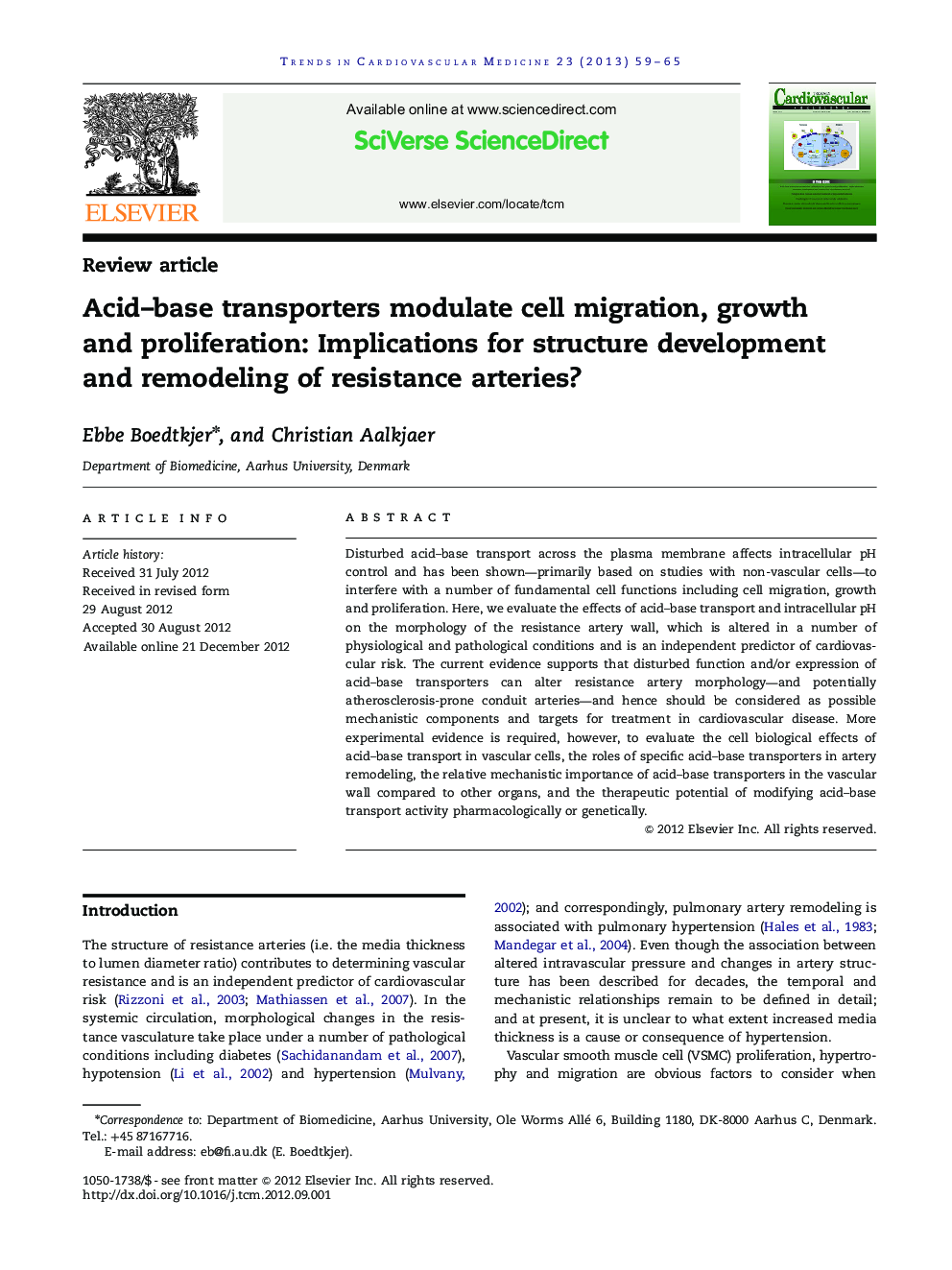| Article ID | Journal | Published Year | Pages | File Type |
|---|---|---|---|---|
| 3030974 | Trends in Cardiovascular Medicine | 2013 | 7 Pages |
Disturbed acid–base transport across the plasma membrane affects intracellular pH control and has been shown—primarily based on studies with non-vascular cells—to interfere with a number of fundamental cell functions including cell migration, growth and proliferation. Here, we evaluate the effects of acid–base transport and intracellular pH on the morphology of the resistance artery wall, which is altered in a number of physiological and pathological conditions and is an independent predictor of cardiovascular risk. The current evidence supports that disturbed function and/or expression of acid–base transporters can alter resistance artery morphology—and potentially atherosclerosis-prone conduit arteries—and hence should be considered as possible mechanistic components and targets for treatment in cardiovascular disease. More experimental evidence is required, however, to evaluate the cell biological effects of acid–base transport in vascular cells, the roles of specific acid–base transporters in artery remodeling, the relative mechanistic importance of acid–base transporters in the vascular wall compared to other organs, and the therapeutic potential of modifying acid–base transport activity pharmacologically or genetically.
